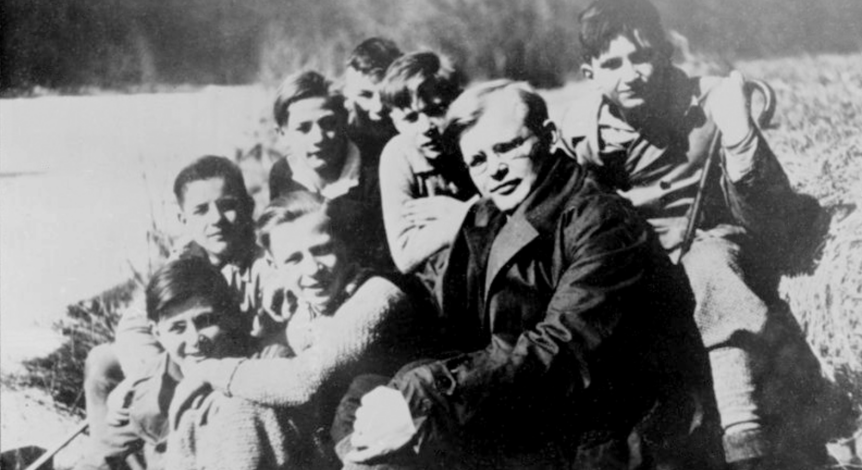In 1924 Dietrich Bonhoeffer, then 18 years old, determines to become a theologian, seeking to study theology at the University of Berlin. In 1931 the young theologian experienced what he called “a great liberation.” This liberation pulled him into the church. He spoke of rediscovering scripture, prayer and discipleship. He referred to his new way of reading scripture as becoming “more wonderful to me with each day.” He said, ”The revival of the church and the ministry became my supreme concern.”
After this great liberation Bonhoeffer continually asked one question “Who is Jesus Christ for us?” For Bonhoeffer he is the Ascended Christ. Jesus has ascended as the incarnate, crucified and resurrected Lord of the world. Ascension makes possible his presence in and as the church. Loss of the Ascended Christ exposes the church to capitulation before the onslaught of the culture’s propaganda.
Bonhoeffer declared in 1933, “If he (Jesus) was just an idealistic founder of a religion, I can be elevated by his work and stimulated to follow his example. But my sin is not forgiven, God remains angry and I am still in the power of death.” The church cannot be a called out community of disciples unless there is an Ascended Christ to save us and call us out of the world into his new community.
It is this profound devotion to the Ascended Christ that equipped a twenty seven year old theology instructor to immediately discern the danger of Hitler and to act with such discerning faithfulness as disciple, professor, pastor, spy and martyr.
In April 1933 twenty seven year old Dietrich gave a speech on the radio just three months after Hitler was appointed Reich Chancellor. In that speech Bonhoeffer spoke of the Fuhrer, the German notion of the leader that arose out of the post World War 1 generation and its search for meaning and guidance out of its troubles. He saw a fundamental danger: “The authority of the Fuhrer is submitted to nothing. This is the mis-leader. “ Bonhoeffer went on to say, “The true leader must always be able to disillusion. It is just this that is his responsibility and his real object. He must lead his followers away from the authority of his person to recognition of the real authority of orders and offices.” The leader and office together point to the final authority itself, the Ascended Christ.
For good reason the Nazis knocked this live broadcast off the radio before he finished.
Beginning in 1935 Bonhoeffer conducted an underground seminary at Zingsthof and then at Finkenwalde. Discipleship, November, 1937, published two months after the Nazis closed the seminary at Finkenwalde , set out the discipleship vision Bonhoeffer taught the seminarians, 1935-1937. Disciples, practitioners of costly grace, justified and sanctified, live together as the church, the new humanity on the earth. The Spirit seals the church in the Spirit in the world. The church, not the German volk, is the “city set on a hill.” The Church’s separation from the world is not a physical withdrawal but rather a spiritual assault in the world.
Life Together, published in 1938, sets out the shape of the Christ centered communities in which Bonhoeffer discipled and trained pastors from 1935 to 1937.
Through the lense of the ascended Christ Bonhoeffer saw all things. He embodied the rhythms of faith and obedience: devotion to the Ascended Christ, the rigorous rediscovery of the Sermon on the Mount, life together in disciplined, worshipful relationality in Christ’s name, the calling to live a “worldly” life for Christ’s sake in the world and the willingness to embrace ” the last station on the way to freedom,” death itself.
Bonhoeffer’s witness to Jesus the Messiah- Ascended Lord of the world, led to his execution by the Nazis in April of 1945. In Discipleship he had said, “When Christ calls a man he bids him come and die.” Both Jesus and Bonhoeffer really meant it. Both Jesus and his young witness call us to rise above this cultural moment to live a life and die a death “worthy of the calling.”

